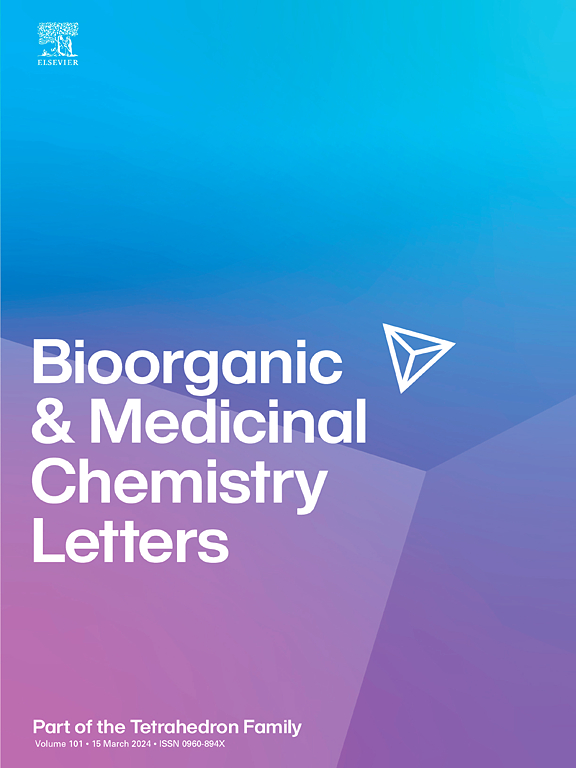Design, synthesis and cytotoxic activity of novel lipophilic cationic derivatives of diosgenin and sarsasapogenin
IF 2.5
4区 医学
Q3 CHEMISTRY, MEDICINAL
引用次数: 0
Abstract
Novel lipophilic cationic derivatives including quaternary ammonium salt and triphenylphosphine series were designed and synthesized using diosgenin (1) and sarsasapogenin (2) as substrates to improve the cytotoxicity and selectivity. Most of the derivatives showed higher cytotoxicity against all cancer cell lines tested, compound 13 exhibited the most superior activity against A549 cells with an IC50 value of 0.95 μM, which was 34-fold of diosgenin. Preliminary cellular mechanism studies elucidated that compound 13 might arrest cell cycle at G0/G1 phase, trigger apoptosis via up-regulating the expression of Bax, down-regulating the expression of Bcl-2 and caspase-3, and induce an increase in the generation of intracellular reactive oxygen species (ROS) in A549 cells. In addition, molecular docking analysis revealed that compound 13 could occupy the active site of p38α-MAPK well and interact to the surrounding amino acids by salt bridge and conjugation. These results suggested that compound 13 had the potential to serve as an antitumor lead agent, probably exert antitumor effect through mitochondrial pathway and p38α MAPK pathway.

薯蓣皂苷元和菝葜皂苷元新型亲脂性阳离子衍生物的设计、合成及其细胞毒活性。
以薯蓣皂苷元(1)和菝葜皂苷元(2)为底物,设计合成了季铵盐和三苯基膦系列新型亲脂性阳离子衍生物,以提高其细胞毒性和选择性。化合物13对A549细胞的IC50值为0.95 μM,是薯蓣皂苷元的34倍。初步的细胞机制研究表明,化合物13可能通过上调Bax的表达,下调Bcl-2和caspase-3的表达,使A549细胞周期停留在G0/G1期,引发细胞凋亡,并诱导细胞内活性氧(ROS)的生成增加。此外,分子对接分析表明,化合物13可以很好地占据p38α-MAPK的活性位点,并通过盐桥和偶联与周围氨基酸相互作用。上述结果提示化合物13具有抗肿瘤先导剂的潜力,可能通过线粒体途径和p38α MAPK途径发挥抗肿瘤作用。
本文章由计算机程序翻译,如有差异,请以英文原文为准。
求助全文
约1分钟内获得全文
求助全文
来源期刊
CiteScore
5.70
自引率
3.70%
发文量
463
审稿时长
27 days
期刊介绍:
Bioorganic & Medicinal Chemistry Letters presents preliminary experimental or theoretical research results of outstanding significance and timeliness on all aspects of science at the interface of chemistry and biology and on major advances in drug design and development. The journal publishes articles in the form of communications reporting experimental or theoretical results of special interest, and strives to provide maximum dissemination to a large, international audience.

 求助内容:
求助内容: 应助结果提醒方式:
应助结果提醒方式:


